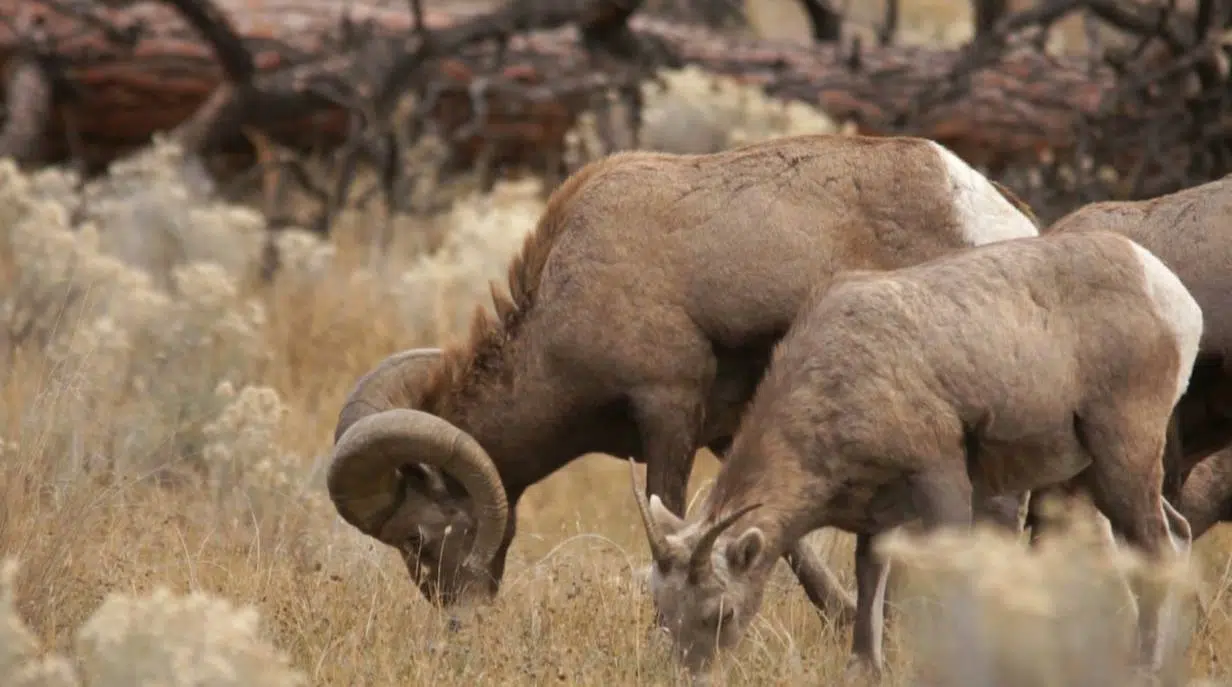
Big-horned sheep ready for mating season
KAMLOOPS — In the grasslands above Kamloops Lake, the rams are trying everything and anything to woo the ewes. They’re ready to mate and grow the herd.
“The rams follow the ewes around and you’ll see them tilting their head back and they’ll peel the top lip up, and that’s to taste the air. They can actually smell the pheromones in the air, as to when a ewe is ready to be bred,” says Frank Ritcey, provincial coordinator at Wildsafe BC.
This mating season, lasting from the third week in October until mid-November, is crucial. It’s the only chance for these big-horned sheep to breed.


